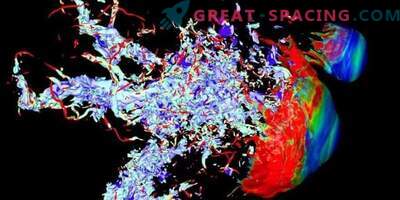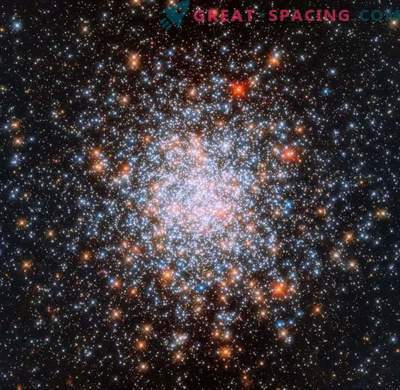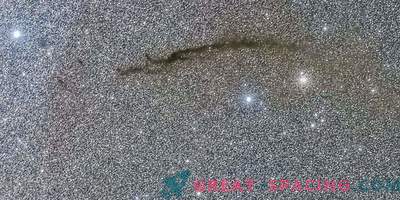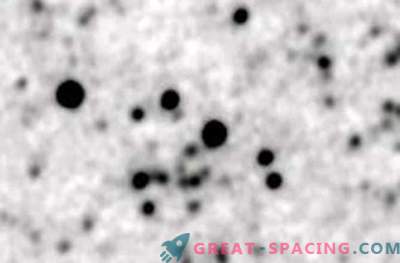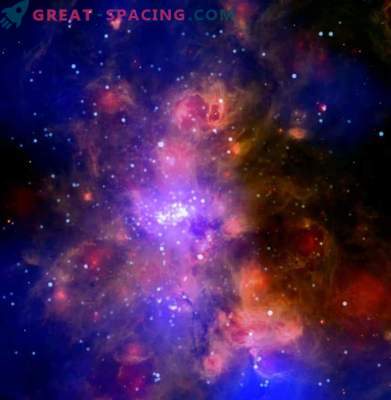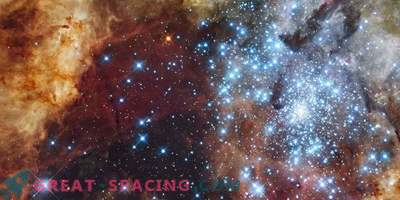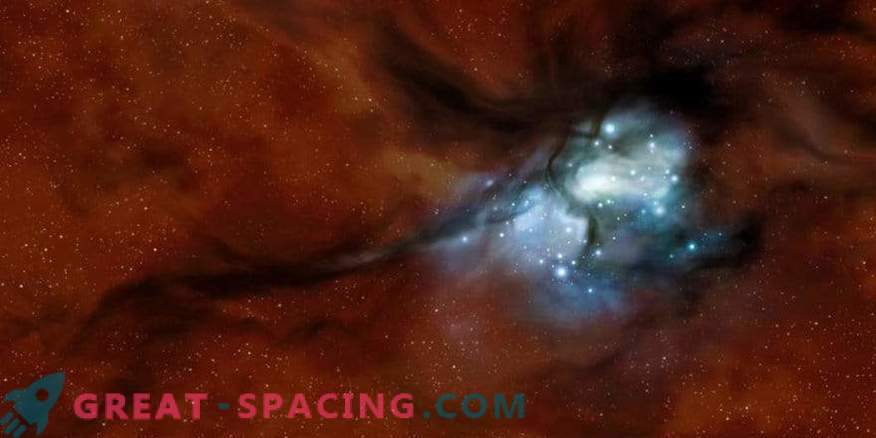
Artistic vision of a star cluster created in the collision of turbulent molecular clouds (dark shadows in front of a galactic star background)
The sun, like all stars, appeared in a large cold cloud of molecular gas and dust. Perhaps he had dozens or hundreds of star brothers and sisters (star cluster), but these early satellites sunk into oblivion and scattered throughout the Milky Way galaxy. However, the process of the birth of stars continues today, both in our galaxy and beyond. Star clusters form in the hearts of optically dark clouds, where the early phases of nucleation are hidden from observers. However, they can be found in the infrared range, so SOFIA is intended to uncover the riddle of the process of the appearance of clusters.
Traditional models claim that much of the responsibility for the appearance of star clusters lies with gravity. Later observations show that magnetic fields and / or turbulence are involved and can even dominate the creation process. But what causes such events?
Using the SOFIA tool, astronomers have been able to find new evidence that star clusters form as a result of collisions between giant molecular clouds. Stars are fed by nuclear reactions that create new chemical elements.

An illustration of molecular clouds surrounded by atomic shells (green) found by SOFIA due to radiation from ionized carbon. The spatial displacement and movements of these shells confirm the predictions of the simulation of cloudy collisions.
Researchers studied the distribution and movement of ionized carbon around a molecular cloud where stars may appear. It seems that two different components of molecular gas collide with each other at a speed of more than 20,000 miles per hour. The distribution and velocity of molecular and ionized gases are consistent with simulations of cloud collisions, which indicate that star clusters are created when a gas is compressed in a shock wave (a collision of clouds).
There is still no scientific coherence regarding the mechanism responsible for creating star clusters, but SOFIA observations have helped scientists take an important step toward uncovering the mystery. However, now all data points to a collision model. The authors hope that future observations will provide more information.

